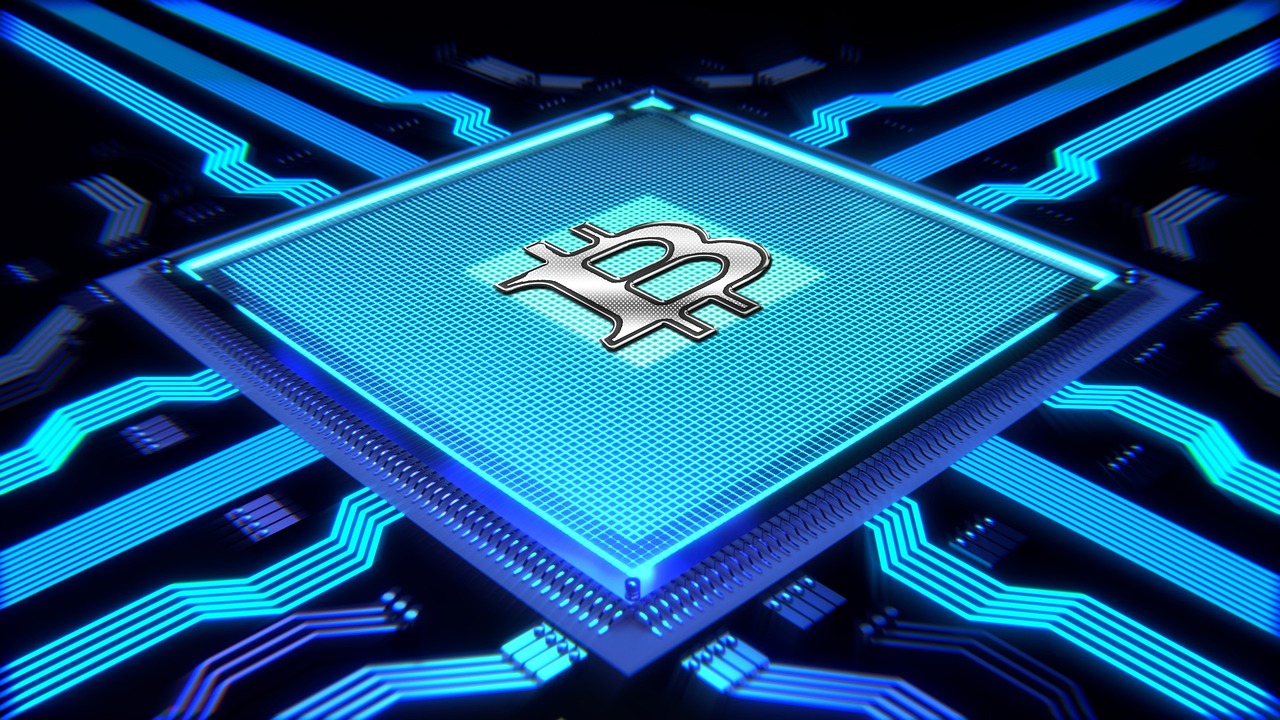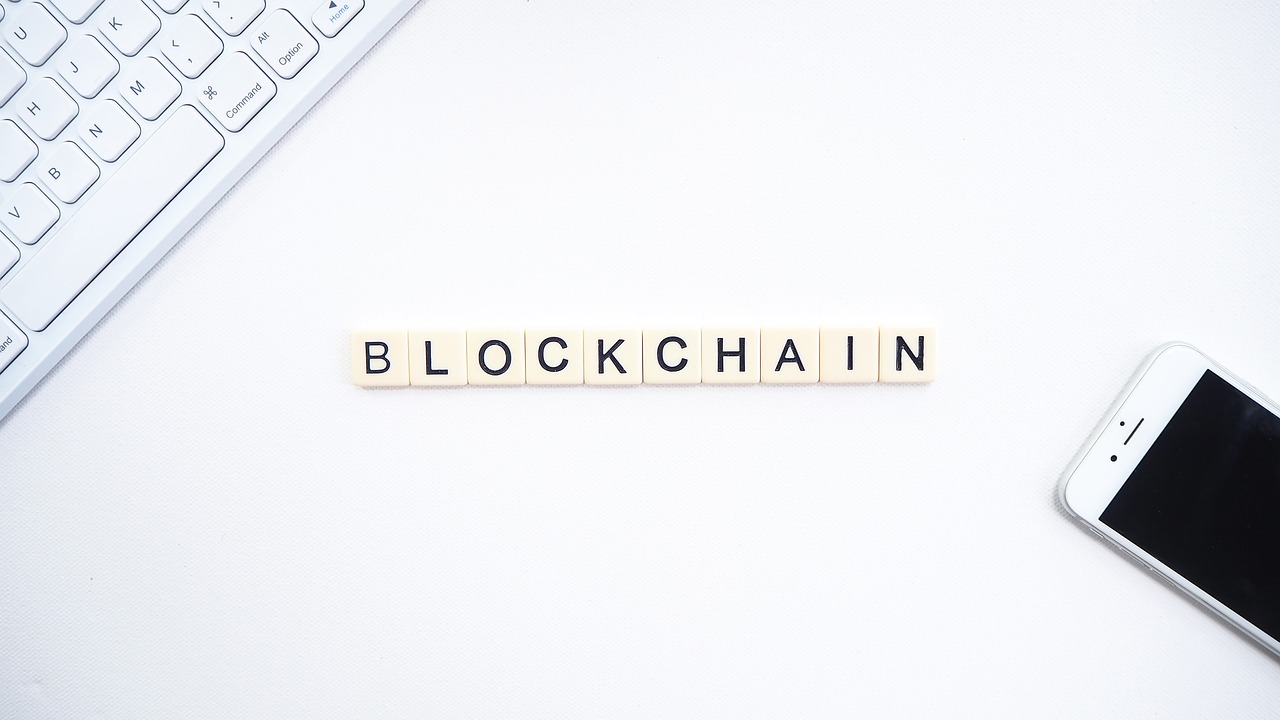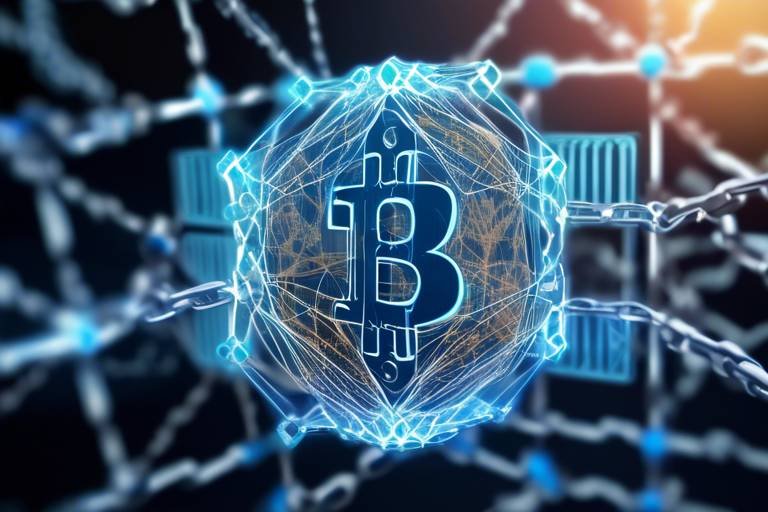The Role of Blockchain in Secure Digital Archiving
In today's digital age, the preservation of data is more crucial than ever. We are inundated with information, and the need to ensure that this data remains secure, accessible, and unaltered over time is paramount. Enter blockchain technology, a revolutionary advancement that is changing the landscape of digital archiving. But what exactly is blockchain, and how does it enhance the security and integrity of our precious data? Let’s dive in!
At its core, blockchain is a decentralized digital ledger that records transactions across multiple computers. This means that no single entity has control over the entire chain, making it incredibly resistant to errors and fraud. Each transaction is secured through cryptographic techniques, ensuring that the data is not only safe but also verifiable. By distributing the data across a network of computers, blockchain eliminates the risks associated with centralized data management. Imagine it like a group of friends sharing a diary; everyone has a copy, and any changes made are visible to all, preventing anyone from sneaking in a false entry.
So, why should we consider blockchain for digital archiving? The benefits are numerous and compelling:
- Enhanced Security: Blockchain’s cryptographic nature ensures that data is protected from unauthorized access and tampering.
- Transparency: Every transaction is recorded and visible to all participants, fostering trust among users.
- Traceability: Modifications to data can be tracked over time, providing a clear history of changes.
One of the standout features of blockchain is its immutability. Once data is recorded on the blockchain, it cannot be altered or deleted without consensus from the network. This means that the integrity of the data is maintained, creating a trustworthy archival system. Think of it as a time capsule; once sealed, it preserves everything inside for future generations without the risk of contamination or alteration.
Blockchain provides comprehensive audit trails that document every transaction made within the digital archive. This level of accountability is crucial for organizations that need to verify data integrity and compliance. With blockchain, each entry is time-stamped and linked to the previous one, creating a chain of evidence that is easily traceable. It’s like having a detailed receipt for every transaction you've ever made, ensuring that you can always go back and verify your history.
The decentralization of blockchain technology significantly enhances accessibility and redundancy in digital archiving solutions. By distributing data across a network of nodes, blockchain ensures that even if one node goes down, the data remains accessible from other nodes. This is akin to having multiple copies of a book stored in different libraries; if one library is closed, you can still find the book in another. This redundancy is vital for ensuring that important data is never lost.
Another exciting aspect of blockchain technology is the use of smart contracts. These self-executing contracts are programmed to automatically enforce and execute terms of an agreement once certain conditions are met. In the context of digital archiving, smart contracts can automate processes such as data access permissions and compliance checks, reducing the risk of human error and enhancing overall efficiency. Imagine a vending machine that not only dispenses snacks but also ensures you’ve paid the correct amount before doing so!
While blockchain offers remarkable benefits, it’s not without its challenges. Implementing this technology in digital archiving comes with its own set of hurdles:
As the volume of data increases, so do the challenges related to scalability. Many blockchain networks struggle to handle large-scale operations efficiently. This can lead to slower transaction times and increased costs, which are significant concerns for organizations looking to adopt blockchain for archiving purposes. It’s like trying to fit a growing library into a small room; eventually, you’ll run out of space!
Another pressing issue is the energy consumption associated with blockchain technology. The process of validating transactions can require substantial computational power, leading to high energy usage. This raises sustainability concerns, especially for organizations aiming to maintain eco-friendly practices. It’s essential to consider whether the benefits of blockchain outweigh the environmental costs, much like weighing the pros and cons of a flashy new gadget that drains your battery.
Q: What is blockchain?
A: Blockchain is a decentralized digital ledger that records transactions across multiple computers, ensuring data security and integrity.
Q: How does blockchain enhance digital archiving?
A: Blockchain enhances digital archiving by providing enhanced security, transparency, immutability, and comprehensive audit trails.
Q: What are smart contracts?
A: Smart contracts are self-executing contracts with the terms of the agreement directly written into code, automating processes and reducing human error.
Q: What challenges does blockchain face in digital archiving?
A: Challenges include scalability issues, energy consumption concerns, and regulatory hurdles.

Understanding Blockchain Technology
Blockchain technology, at its core, is a revolutionary system that allows for the secure and transparent recording of data. Imagine a digital ledger that is not only public but also incredibly difficult to tamper with. This is the essence of blockchain, where each piece of data is stored in a block, and these blocks are linked together in a chain. This decentralized architecture means that no single entity has control over the entire chain, making it significantly harder for malicious actors to alter any information. In fact, one of the most remarkable features of blockchain is its cryptographic security, which ensures that data is encrypted and protected from unauthorized access.
To better understand how blockchain functions, let's break down its key components:
- Decentralization: Unlike traditional databases that rely on a central authority, blockchain distributes data across a network of computers. This not only enhances security but also improves resilience, as there is no single point of failure.
- Transparency: Every transaction recorded on the blockchain is visible to all participants in the network. This transparency fosters trust and accountability, as anyone can verify the data independently.
- Immutability: Once data is added to the blockchain, it cannot be altered or deleted. This feature is crucial for digital archiving, as it ensures that historical records remain intact and reliable.
These features contribute significantly to secure data management and archiving. For instance, when organizations utilize blockchain for digital archiving, they can rest assured that their records are not only safe from tampering but also easily accessible. This is particularly important in industries like healthcare, finance, and legal sectors, where data integrity is paramount.
In summary, blockchain technology presents a compelling solution for secure digital archiving. Its decentralized nature, combined with cryptographic security and immutability, creates a robust framework that enhances data management practices. As we delve deeper into the benefits of blockchain for digital archiving, it becomes evident that this technology is not just a trend but a necessary evolution in how we handle data.

Benefits of Blockchain for Digital Archiving
Blockchain technology is revolutionizing the way we think about digital archiving. Imagine a world where your valuable data is not only secure but also easily accessible and transparent. That's the beauty of blockchain! One of the most significant benefits of using blockchain for digital archiving is its enhanced security. Unlike traditional centralized systems, where a single point of failure can lead to data breaches, blockchain's decentralized nature means that your data is spread across a network of computers. This makes it incredibly difficult for any unauthorized party to tamper with your information.
Moreover, blockchain provides transparency that is unparalleled. Every transaction or modification made to the archived data is recorded in a way that anyone with access to the blockchain can verify. This level of transparency ensures that all parties involved can trust the integrity of the data. For instance, if a document is altered, the blockchain will record the change along with a timestamp and the identity of the person who made the change. This leads us to the next significant benefit: traceability.
With blockchain, every modification is traceable. This means that if there is ever a dispute over the authenticity of a document, you can easily trace back through the blockchain to see what changes were made and when. This capability is crucial for organizations that need to maintain a high level of accountability. Imagine a legal firm that needs to prove that a contract was never altered after it was signed; blockchain makes this process straightforward and reliable.
Another major advantage of blockchain in digital archiving is its ability to ensure data integrity and immutability. Once data is recorded on the blockchain, it cannot be changed or deleted. This immutability prevents unauthorized alterations and ensures that the original data remains intact. Think of it as a digital vault; once something is locked inside, it cannot be modified without a trace. This feature is particularly beneficial for industries that handle sensitive information, such as healthcare or finance, where maintaining the integrity of records is paramount.
Blockchain also provides comprehensive audit trails that facilitate accountability and verification. Each transaction is recorded as a block, forming a chain of data that can be reviewed at any time. This is crucial for organizations that need to comply with regulatory standards or wish to conduct internal audits. With blockchain, the audit process becomes much simpler and more efficient, as all necessary information is readily available and easily accessible.
Let's not forget about the importance of decentralization in blockchain technology. This characteristic not only enhances security but also improves accessibility and redundancy. In a traditional digital archiving system, if the central server goes down, access to the archived data can be lost. However, with blockchain, even if one node fails, the data remains accessible from other nodes in the network. This redundancy ensures that your archived data is always available, no matter what happens.
In summary, the benefits of using blockchain for digital archiving are numerous and compelling. From enhanced security and transparency to data integrity and accessibility, blockchain technology is paving the way for a more secure and reliable method of archiving important information. As we continue to embrace digital transformation, leveraging blockchain can ensure that our data remains safe, trustworthy, and accessible for years to come.

Data Integrity and Immutability
In the digital age, where information is constantly being created and shared, the integrity of data is paramount. Imagine a world where every piece of information you store can be altered or deleted at the whim of anyone with access. This is where blockchain technology steps in, acting as a digital fortress that guarantees the immutability of your data. By employing a decentralized ledger system, blockchain ensures that once data is recorded, it cannot be changed or tampered with without the consensus of the network. This feature is crucial for digital archiving, as it means that historical records remain intact and trustworthy.
When we talk about data integrity, we are discussing the assurance that the information remains accurate and consistent over its lifecycle. Blockchain achieves this by utilizing cryptographic hashing. Each block in the chain contains not only its own data but also a reference to the previous block, creating a chain of trust. If someone tries to alter the data in any block, the hash would change, breaking the chain and alerting everyone on the network. This makes unauthorized alterations virtually impossible, thus preserving the authenticity of archived data.
Furthermore, the concept of immutability in blockchain can be likened to a digital time capsule. Once you place something inside, it’s sealed and protected from the outside world. This is particularly beneficial for organizations that need to maintain compliance with regulations that require data retention for extended periods. With blockchain, companies can confidently store sensitive information, knowing it will remain unchanged and verifiable for as long as necessary.
To illustrate the significance of data integrity and immutability, consider the following table that compares traditional data storage methods with blockchain technology:
| Feature | Traditional Storage | Blockchain Storage |
|---|---|---|
| Data Alteration | Possible by authorized users | Immutability ensures no alterations |
| Data Verification | Requires manual checks | Automatic through consensus |
| Audit Trails | Limited and often incomplete | Comprehensive and transparent |
| Security | Vulnerable to breaches | Highly secure through decentralization |
In conclusion, the integration of blockchain technology into digital archiving systems fundamentally enhances data integrity and immutability. By ensuring that records remain unaltered and verifiable, organizations can foster trust and accountability in their archival processes. This not only protects sensitive information but also builds a robust framework for future data management. As we continue to navigate the complexities of the digital landscape, embracing these innovative solutions will undoubtedly pave the way for more secure and reliable data archiving practices.
- What is data integrity? Data integrity refers to the accuracy and consistency of data throughout its lifecycle.
- How does blockchain ensure data immutability? Blockchain uses cryptographic hashing and a decentralized ledger to prevent unauthorized changes to data.
- Why is immutability important for digital archiving? Immutability ensures that historical records remain intact and trustworthy, which is crucial for compliance and accountability.
- Can data on a blockchain be deleted? No, once data is recorded on a blockchain, it cannot be deleted or altered.

Audit Trails
In the digital age, where information is the currency of trust, have become a fundamental aspect of data management, especially when it comes to digital archiving. But what exactly is an audit trail? Think of it as a detailed logbook that records every transaction, modification, and access to data within a system. In the context of blockchain technology, this logbook is not only comprehensive but also tamper-proof, thanks to the unique characteristics of blockchain.
Each entry in a blockchain audit trail is time-stamped and linked to the previous entry, creating an unbreakable chain of records. This transparency is crucial for organizations that need to maintain a high level of accountability. Imagine trying to track the history of a document—every change, every access point—without having to sift through countless versions or risk losing critical information. With blockchain, this process becomes seamless and reliable.
Moreover, the immutability of blockchain ensures that once data is recorded, it cannot be altered or deleted without leaving a trace. This feature is vital for compliance with regulations and standards that demand strict data integrity. Organizations can demonstrate that they have followed the proper protocols in data handling, which is especially important in sectors like finance, healthcare, and legal services.
To illustrate the significance of audit trails in digital archiving, consider the following benefits:
- Accountability: Every action taken on the data is traceable, holding individuals accountable for their actions.
- Verification: Audit trails provide the means to verify the authenticity of data, establishing trust among stakeholders.
- Dispute Resolution: In cases of discrepancies, a clear audit trail can help resolve conflicts by providing a factual basis for discussions.
In summary, the role of audit trails in blockchain technology cannot be overstated. They not only enhance the security and integrity of digital archives but also foster a culture of accountability and transparency. By providing a reliable means to track and verify every interaction with data, organizations can rest assured that their archival processes are both secure and compliant with necessary regulations.
What is an audit trail?
An audit trail is a chronological record of all transactions and modifications made to data within a system, allowing for tracking and verification.
How does blockchain enhance audit trails?
Blockchain enhances audit trails by providing a tamper-proof and transparent record of all actions taken on data, ensuring that every transaction is verifiable and immutable.
Why are audit trails important in digital archiving?
Audit trails are important in digital archiving because they ensure accountability, facilitate compliance with regulations, and help resolve disputes by providing a clear history of data interactions.

Decentralization and Accessibility
When we talk about decentralization in the context of blockchain, we're diving into a realm that flips traditional data management on its head. Instead of relying on a single, central authority to control and manage data, blockchain distributes this responsibility across a network of nodes. Imagine a library where every book is not just stored in one location but is replicated in multiple libraries around the world. This means that even if one library burns down, the knowledge contained in those books is still safe and sound in others. That's the beauty of decentralization!
Now, why is this important for digital archiving? Well, decentralization enhances accessibility. Users can access their data from various points in the network, ensuring that it is available even if some nodes go offline or face technical issues. This redundancy is crucial for preserving information over time, especially as we transition into an increasingly digital world where data loss can occur due to various unforeseen circumstances.
Moreover, the decentralized nature of blockchain promotes transparency. Each transaction or modification made to a record is visible to all participants in the network. This means that anyone can verify the authenticity of the data, thus building trust among users. In a traditional system, if you wanted to verify a document's authenticity, you'd have to rely on a single entity's word. But with blockchain, the proof is in the pudding—or rather, in the code!
To illustrate how decentralization enhances both accessibility and security in digital archiving, consider the following table:
| Feature | Traditional System | Blockchain System |
|---|---|---|
| Data Control | Centralized Authority | Distributed Network |
| Data Access | Limited to Central Location | Accessible from Multiple Nodes |
| Data Integrity | Vulnerable to Tampering | Immutable Records |
| Transparency | Opaque Processes | Open for Verification |
In summary, decentralization in blockchain not only makes data more accessible but also enhances its security and integrity. As we move forward, embracing these principles will be vital for creating robust digital archiving solutions that stand the test of time.
Q: What is blockchain technology?
A: Blockchain technology is a decentralized digital ledger that records transactions across many computers, ensuring that the recorded data cannot be altered retroactively.
Q: How does decentralization improve data security?
A: By distributing data across multiple nodes, decentralization reduces the risk of a single point of failure, making it harder for malicious actors to compromise the entire system.
Q: Can blockchain be used for all types of digital archiving?
A: While blockchain has numerous advantages, its applicability depends on the specific needs of the archiving process, including the volume of data and regulatory requirements.
Q: What are the environmental concerns associated with blockchain?
A: The energy consumption of blockchain networks, especially those using proof-of-work mechanisms, can be significant, leading to discussions about sustainability and environmental impact.

Smart Contracts in Archiving
When we think about the future of digital archiving, one of the most exciting developments is the use of smart contracts. These are essentially self-executing contracts with the terms of the agreement directly written into code. Imagine having a digital filing cabinet that not only stores your documents but also automatically manages permissions, updates, and transactions without needing a middleman. This is the magic of smart contracts in the world of archiving!
One of the primary advantages of smart contracts is their ability to automate processes. For instance, when a document is archived, a smart contract can automatically log that event on the blockchain, ensuring that there's a permanent and unalterable record of it. This reduces the risk of human error, as everything is done through code rather than manual entry. Think of it like having an ultra-reliable assistant who never forgets to file your important documents or update their status!
Moreover, smart contracts enhance the efficiency of digital archiving by streamlining workflows. For example, they can trigger notifications when certain conditions are met, such as when a document needs to be reviewed or when a specific time frame has elapsed. This not only saves time but also ensures that important tasks are not overlooked. It’s like having a personal alarm clock that reminds you of your responsibilities, only this one is programmed to keep your archive in top shape.
Additionally, smart contracts bring a new level of transparency to digital archiving. Since all transactions are recorded on the blockchain, anyone with the necessary permissions can view the complete history of changes made to a document. This feature is particularly valuable for organizations that need to comply with regulations or maintain a high level of accountability. Imagine being able to trace every edit made to a crucial document back to its origin, all thanks to the transparency offered by smart contracts!
To illustrate how smart contracts function in archiving, consider the following table:
| Function | Description |
|---|---|
| Automated Record Keeping | Smart contracts automatically log all actions taken on archived documents. |
| Permission Management | They manage who can access or edit documents without manual intervention. |
| Notification System | Trigger alerts for document reviews or updates based on predefined conditions. |
| Compliance Tracking | Maintain a transparent history of document changes for regulatory purposes. |
In conclusion, the integration of smart contracts into digital archiving systems is a game-changer. They not only enhance the security and efficiency of archiving processes but also provide a level of transparency and accountability that traditional methods simply can't match. As organizations continue to embrace digital transformation, the role of smart contracts will undoubtedly grow, paving the way for a more secure and efficient future in data management.
- What are smart contracts? Smart contracts are self-executing contracts with the terms directly written into code, allowing for automatic execution of agreements.
- How do smart contracts improve digital archiving? They automate processes, reduce human error, enhance transparency, and streamline workflows.
- Can smart contracts be used for compliance purposes? Yes, they provide a transparent history of document changes, which is vital for regulatory compliance.
- Are there any risks associated with smart contracts? While they offer many benefits, risks include coding errors and potential security vulnerabilities.

Challenges and Limitations
While blockchain technology offers a plethora of benefits for digital archiving, it is not without its . As with any innovation, understanding these obstacles is crucial for effective implementation. One of the most pressing issues is scalability. As the volume of data increases, the ability of blockchain networks to handle this data efficiently can become strained. Imagine trying to fit an ever-growing library into a small room; eventually, space becomes a significant concern. Similarly, blockchain networks can struggle to maintain speed and efficiency when processing a large number of transactions, which can hinder their effectiveness in large-scale archiving systems.
Another critical challenge is energy consumption. Blockchain technology, particularly those utilizing proof-of-work consensus mechanisms, can be incredibly energy-intensive. This raises concerns about sustainability and environmental impact, especially as organizations strive to adopt greener practices. The energy required to maintain blockchain networks can be likened to the power consumption of an entire city, which is alarming when considering the broader implications for our planet. As digital archiving becomes more prevalent, the demand for energy-efficient solutions will only increase.
Moreover, regulatory concerns pose a significant barrier to the widespread adoption of blockchain in digital archiving. Many organizations are still navigating the complex landscape of data protection regulations, such as GDPR in Europe. The immutable nature of blockchain can conflict with the right to be forgotten, a principle enshrined in various data protection laws. This creates a paradox where the very feature that guarantees data integrity could also lead to legal challenges, making organizations hesitant to fully embrace blockchain technology.
In summary, while the potential of blockchain in digital archiving is vast, these challenges must be addressed to unlock its full capabilities. Stakeholders must collaborate to develop solutions that enhance scalability, reduce energy consumption, and navigate regulatory landscapes. Only then can we realize a future where blockchain technology seamlessly integrates into our digital archiving practices.
- What are the main challenges of blockchain technology in digital archiving? The primary challenges include scalability, energy consumption, and regulatory concerns.
- How does scalability affect blockchain's use in digital archiving? Scalability issues can hinder the processing speed and efficiency of blockchain networks, especially with large volumes of data.
- What is the environmental impact of blockchain technology? Blockchain networks, particularly those using proof-of-work, can consume significant amounts of energy, raising sustainability concerns.
- How do regulatory concerns impact blockchain adoption? The immutable nature of blockchain can conflict with data protection laws, creating legal challenges for organizations.

Scalability Issues
When we dive into the world of blockchain technology, one of the most pressing challenges that emerges is scalability. Imagine trying to fit a growing number of passengers into a bus that was only designed for a few. As more people hop on, the bus becomes cramped, and it struggles to keep up with demand. Similarly, blockchain networks often face difficulties in managing an increasing volume of transactions efficiently. This issue becomes particularly pronounced in the context of digital archiving, where vast amounts of data need to be securely stored and easily accessible over time.
The fundamental architecture of many blockchain systems can lead to bottlenecks. For instance, the time it takes to validate and confirm transactions can slow down as the number of users increases. In traditional systems, we often rely on centralized servers that can be upgraded to handle more traffic. However, blockchain's decentralized nature means that every node in the network must process and validate every transaction, which can lead to latency issues. This can be especially problematic for organizations that require rapid access to archived data.
To illustrate this point, consider the following table that compares transaction speeds among different blockchain technologies:
| Blockchain Technology | Transactions Per Second (TPS) | Average Confirmation Time |
|---|---|---|
| Bitcoin | 7 | 10 minutes |
| Ethereum | 30 | 15 seconds |
| Ripple | 1,500 | 4 seconds |
| Solana | 65,000 | 400 milliseconds |
This table highlights the stark differences in performance among various blockchain technologies. While some, like Solana, boast impressive transaction speeds, others, such as Bitcoin, struggle to keep pace with the demands of modern applications. This disparity becomes critical when considering the future of digital archiving, where the ability to quickly access and manage large datasets is essential.
Moreover, scalability issues can also lead to increased costs. As networks become congested, transaction fees can rise significantly, making it economically unfeasible for organizations to utilize blockchain for extensive archiving solutions. In a world where budgets are tight, this can be a major deterrent for businesses looking to leverage blockchain technology.
Ultimately, addressing scalability issues is crucial for the widespread adoption of blockchain in digital archiving. Solutions such as layer 2 scaling solutions, sharding, and alternative consensus mechanisms are being explored to help alleviate these challenges. However, until these solutions become mainstream, organizations must carefully consider the implications of scalability when integrating blockchain into their archiving strategies.
- What is scalability in blockchain? Scalability refers to the ability of a blockchain network to handle a growing amount of work or its potential to enlarge to accommodate that growth.
- Why is scalability important for digital archiving? Scalability is crucial because digital archiving often involves large datasets that need to be accessed and processed quickly. If a blockchain network cannot scale effectively, it may hinder the efficiency of data retrieval and storage.
- What are some solutions to scalability issues? Solutions include layer 2 scaling, sharding, and adopting alternative consensus mechanisms that can help improve transaction speeds and reduce congestion on the network.

Energy Consumption Concerns
When we think about blockchain technology, it’s easy to get swept away by its revolutionary potential. However, one critical aspect that often gets overshadowed is the energy consumption associated with blockchain networks, particularly those that use a proof-of-work consensus mechanism. Just like a car guzzles gas, blockchain can consume a hefty amount of energy, raising eyebrows among environmentalists and technologists alike.
The energy required for mining operations and maintaining blockchain networks can be staggering. For instance, Bitcoin mining alone is estimated to consume more energy than some entire countries. This has led to serious discussions about the sustainability of such systems. Just imagine if every time you wanted to send a text, it required the same energy as running a refrigerator for a day! It’s a bit mind-boggling, isn’t it?
As we delve deeper into the implications of energy consumption, we can categorize the concerns into a few key areas:
- Environmental Impact: The high energy usage contributes to increased carbon footprints, especially when fossil fuels are the primary energy source. This raises ethical questions about the sustainability of blockchain technology.
- Cost Implications: With rising energy costs, the operational expenses for blockchain networks can skyrocket, making them less viable for small businesses or startups.
- Regulatory Scrutiny: As governments become more aware of environmental issues, there may be stricter regulations on energy consumption that could affect blockchain operations.
Interestingly, not all blockchain systems are created equal. Some newer networks are exploring alternative consensus mechanisms, like proof-of-stake, which dramatically reduce energy consumption. In fact, these systems can be likened to riding a bicycle instead of driving a gas-guzzling SUV. They achieve similar results but with significantly less impact on the environment.
In conclusion, while blockchain technology offers tremendous advantages, its energy consumption cannot be ignored. As we strive for a more sustainable future, it’s crucial for developers and organizations to consider the environmental implications of their blockchain solutions. The balance between innovation and responsibility is delicate, but with awareness and action, we can steer towards a greener path.
- What is blockchain technology? Blockchain is a decentralized digital ledger that records transactions across many computers, ensuring that the recorded transactions cannot be altered retroactively.
- How does blockchain enhance data security? By using cryptographic techniques and a decentralized structure, blockchain ensures that data is secure and tamper-proof.
- What are the environmental concerns associated with blockchain? The primary concern is the high energy consumption of some blockchain networks, particularly those using proof-of-work mechanisms, leading to significant carbon footprints.
- Are there more sustainable alternatives to traditional blockchain? Yes, newer consensus mechanisms like proof-of-stake consume significantly less energy and are being adopted by various blockchain networks.
Frequently Asked Questions
-
What is blockchain technology?
Blockchain technology is a decentralized digital ledger that records transactions across many computers securely. This means that no single entity has control over the entire chain, making it incredibly resistant to tampering and fraud. Think of it like a communal notebook where everyone can see and verify the entries, but no one can erase or change them without consensus.
-
How does blockchain enhance digital archiving?
Blockchain enhances digital archiving by providing an immutable record of data. Once information is stored on the blockchain, it cannot be altered or deleted, which ensures the integrity and authenticity of archived data. This is crucial for maintaining trust, especially in sectors where data accuracy is paramount, such as finance or healthcare.
-
What are smart contracts and how do they relate to archiving?
Smart contracts are self-executing contracts with the terms of the agreement directly written into code. In the context of digital archiving, they can automate processes like data verification and access permissions, reducing the likelihood of human error and speeding up workflows. Imagine them as digital vending machines: you put in your request, and the machine automatically delivers the data you need without any manual intervention.
-
What are the audit trails in blockchain?
Audit trails in blockchain refer to the comprehensive records of all transactions that have occurred on the network. This feature allows for accountability and easy verification of data modifications over time. It’s like having a detailed logbook that tracks every change, ensuring that you can always go back and see who made alterations and when.
-
Are there any challenges with using blockchain for digital archiving?
Yes, while blockchain offers many benefits, there are challenges such as scalability issues, energy consumption, and regulatory concerns. For instance, as the volume of data grows, maintaining speed and efficiency can become problematic. Additionally, the environmental impact of energy-intensive blockchain operations is a hot topic that needs addressing.
-
What is the importance of decentralization in blockchain?
Decentralization is vital because it enhances the resilience and accessibility of digital archives. Unlike traditional systems that rely on a single point of failure, a decentralized blockchain spreads data across multiple nodes. This means that even if one part fails, the rest of the system remains intact, ensuring that data is always accessible.
-
Can blockchain technology improve transparency in data management?
Absolutely! Blockchain's transparent nature allows all participants to view the same data in real-time, which fosters trust and collaboration. Since every transaction is recorded and visible, it becomes much harder to hide discrepancies or unauthorized changes, leading to a more accountable data management process.



















